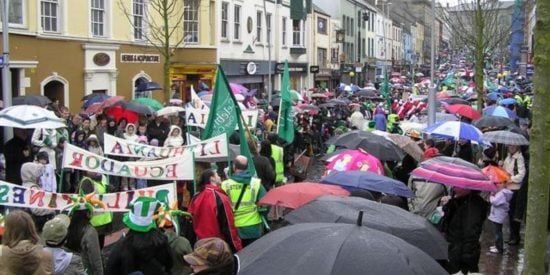Spotlight on Research
ToggleSpotlight on Research
How JD Vance's visit reflects decades of US interest in Greenland
Dr David Murphy of the Department of History reviews the long and contentious history of US interest in the Arctic island, which seems to have entered a new phase under Donald Trump
Monday, 31 March 2025
How criminal justice can harm victims more than crime itself
Secondary victimisation can be prevented if we understand victims' needs and invest in services and approaches to best meet these, writes Dr Ian Marder of the School of Law and Criminology
Monday, 24 March 2025
How 18th century Irish traders set up business in the Canary Islands
Irish merchants were drawn to Tenerife by the growing economic opportunities offered by the island's sweet wines, writes Dr Richard Fitzpatrick, Research Fellow in the Arts and Humanities Institute
Tuesday, 18 March 2025
A short history of extreme weather events around St Patrick's Day
Dr Carla Mateus from the Department of Geography examines the short history of extreme weather events around St Patrick's Day in Ireland
Thursday, 13 March 2025
What we should and shouldn't expect from Ireland's Covid-19 review
Five years after the introduction of Covid-19 restrictions, Shamsoddin Shariati from the Sociology Dept explores the debates that still rage over what Ireland did and didn't do during the pandemic
Monday, 10 March 2025
The big impact of workplace commuting on Irish towns and villages
New research by Caroline Creamer at MU, Prof Des McCafferty at MIC and Dr Karen Keaveney at UCD looks at how commuting from rural Ireland impacts people's lives
Monday, 03 March 2025
What's the effect of being a carer on the caregivers themselves?
Research shows people in caregiving roles could benefit from connecting with peers in similar situations, writes Joan Alaboson, PhD researcher in the Department of Psychology and Research Ireland awardee
Monday, 24 February 2025
5 things to look out for in the German elections
From the likely next chancellor to possible coalition partners, here's what you need to know before Germany goes to the polls, writes Prof Tobias Lock of the Law Department
Friday, 21 February 2025
Can green computing help us deal with the problem of dark data?
Unused digital data is an invisible yet significant issue which consumes substantial amounts of energy and resources, writes Dr Erivelton Nepomuceno of Hamilton and the Department of Electronic Engineering
Wednesday, 19 February 2025
Do you need lessons in love?
Some of us are quite comfortable with being loved, but it is not as easy to embrace the other side of the equation, which is to love, writes Dr Suzanne O'Keeffe of the Froebel Department of Primary and Early Childhood Education
Wednesday, 12 February 2025










